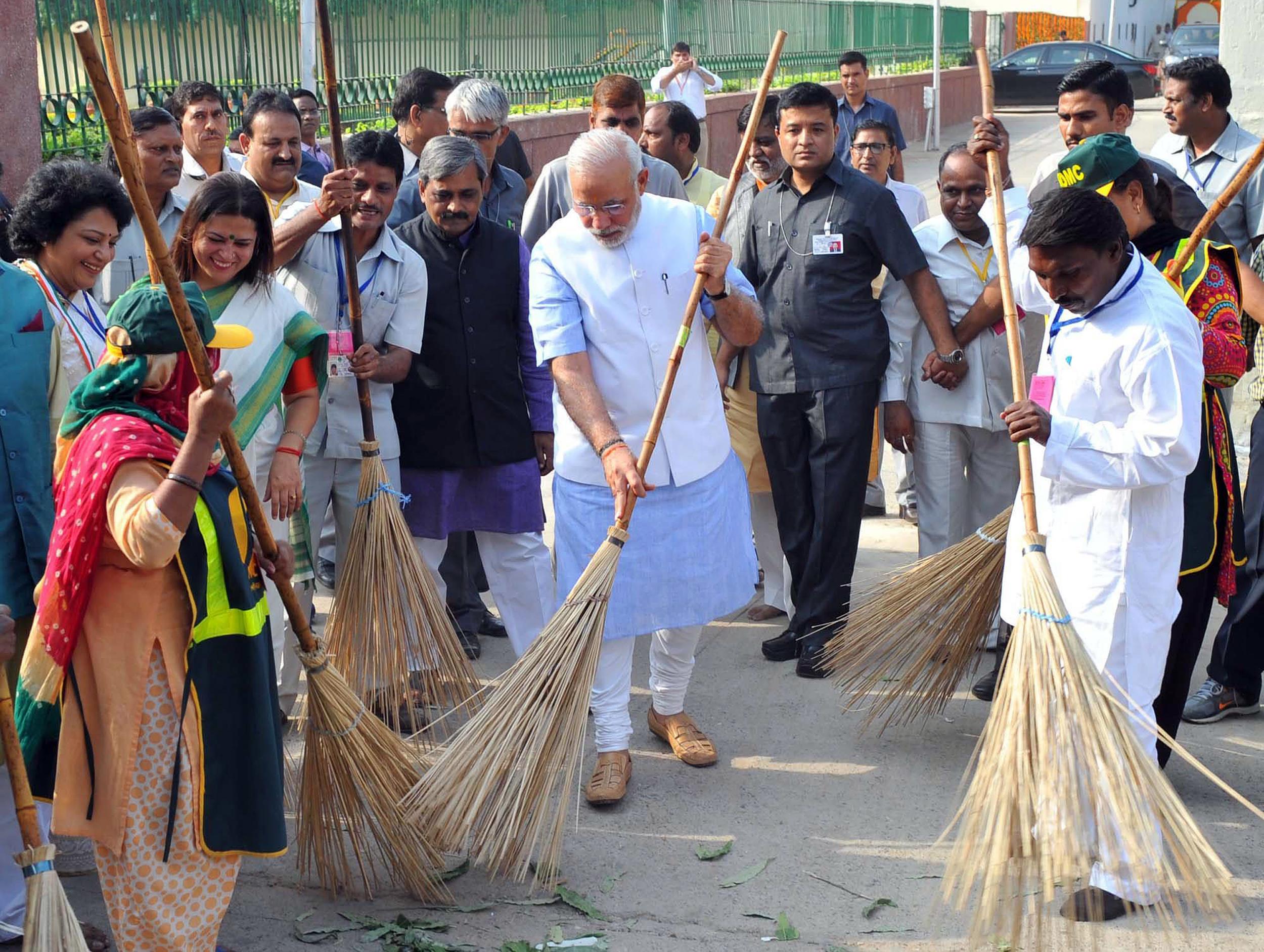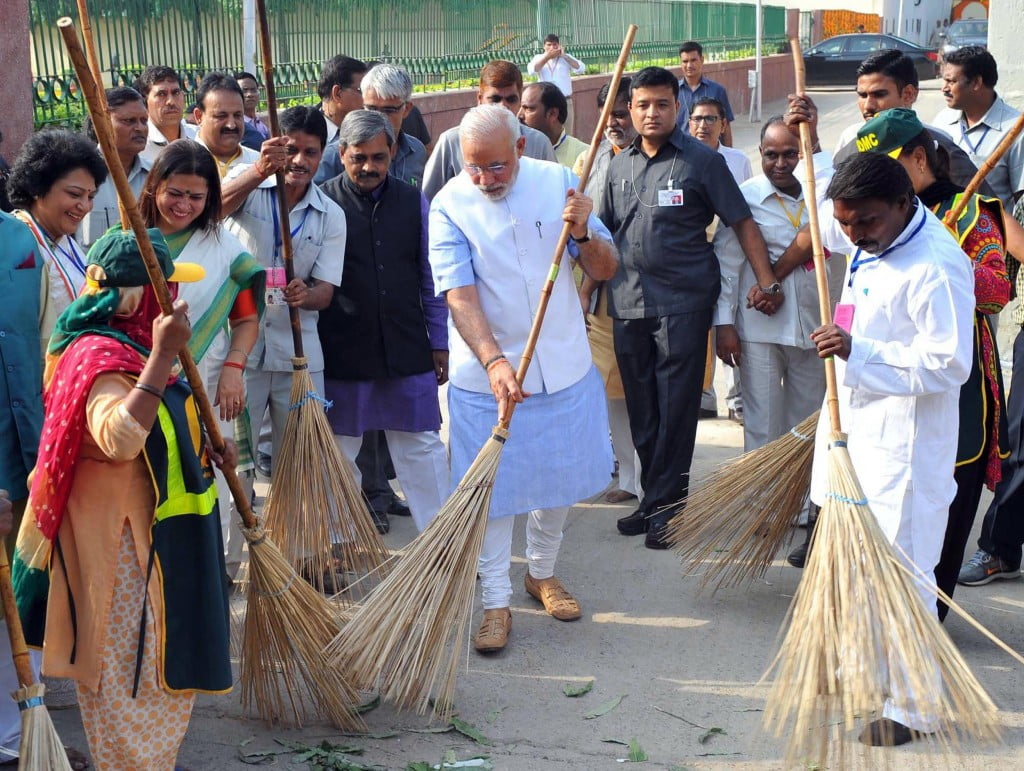Cleanliness is next to Godliness-is now being followed and practiced everywhere in India. In the midst of the process of the Swach Bharat Abhiyan, Padmaja Choudhury attempts to critically examine the sanitation scenario in India.

The ‘Swach Bharat Abhiyan’ got everyone talking about sanitation and cleanliness. The effort taken by our Prime Minister was lauded by everyone. Days after its launch, every newspaper was filled by pictures of politicians and general public cleaning up the roads and streets. To be honest, I found it to be a fashion statement. I wondered how many actually for the true essence of it. Certain sections of people have stopped throwing litter in the streets now but I assume they will forget it once the ‘wave’, high or low, dies down. There are many disturbing facts about sanitation scenario in India and the program.
Nearly 650 million people in India lack toilet facilities. It has been projected that by 2050, 66% of the population will be residing in the urban areas. This heavy population pressure in a developing country like ours can cause the collapse of the sanitary condition. It is the state governments who have the responsibility to provide sanitation in the rural and urban areas. The Union Government supports and supplements efforts of the state Government. It is a matter of concern that the government spending on this sector has been slowly reducing.
Sanitation is a major development challenge in India. The level of urbanization in India has increased from 27.8% in 2001 to 31.2% in 2011. The most rampant form of urban poverty is in the form of urban slums. With the rising of slum population, basic amenities such as water and sanitation would only get severely stressed. Toilets sewage, waste water & solid water must together be tackled. There will also be a need to improve land tenure rights, livelihood option and education and health facilities in the slum areas to make this program more meaningful.
Though the SBA(Swach Bharat Abhiyan) aims to achieve open defecation free India by 2019, however the WHO/UNICEF joint monitoring program for water supply and sanitation has said that at its present pace, India would take time till 2054 to extend improved sanitation at least half of the urban population. According to data from the organization for economic development, India receives almost twice as much development assistance for water, sanitation and water resources management as any other country. Moreover, the World Bank finances a number of projects in the urban and rural areas that are fully or partly dedicated to water supply.
A matter of concern that has been raised for the SBA is the Public Private Partnership (PPP) for both the drinking and sanitation as it has been mentioned in the Action Plan of the Ministry of Drinking Water and Sanitation. There are both good and bad effects of PPP. Only time will tell which one outweighs the other.
It has been observed that most women fall victim to various forms of violence when going to defecate in the open. However the Ministry of Drinking Water and Sanitation has not yet initiated reporting in the gender budget statement. Gender Budgeting is just a process of isolating those budgetary provisions that are directed, wholly or partly to the socio economic uplift of the female population. In absence of household toilets, community sanitary complexes are important to ensure access to sanitation facilities for women. Therefore, the program must also focus on safe and hygienic services through community sanitary complexes. The community toilets should function in such a way that women feel safe and are clean and convenient to the users.
Just constructing a number of toilets won’t make the mission successful if water supply problem is not addressed. It has been seen that toilets are constructed only to be abandoned at a later date due to unavailability of water and clogged sewerage. These toilets can never be able to eliminate open defecation in the country. Construction of toilets alone doesn’t implicate usage. It involves certain aspects like supportive infrastructure, citizen’s mindset and civil use of infrastructure. For a Swach Bharat these important facts are to be taken into account.
Another important thing that is to be noted is the lack of spotlight on the sanitation workers. Sanitation workers are caste based and they are paid below the minimum wages. There is a stigma associated with sanitation that whoever cleans the dirt is dirty. If we are unable to break these vicious links, these people can’t think of living a dignified life without which our country can’t hope of calling itself a developed country.
Lastly, to end the discussion on a positive note, I believe that the top companies that have pledged to improve the sanitation situation in the country will actually do what they have said and that these promises don’t have any ulterior motive.








